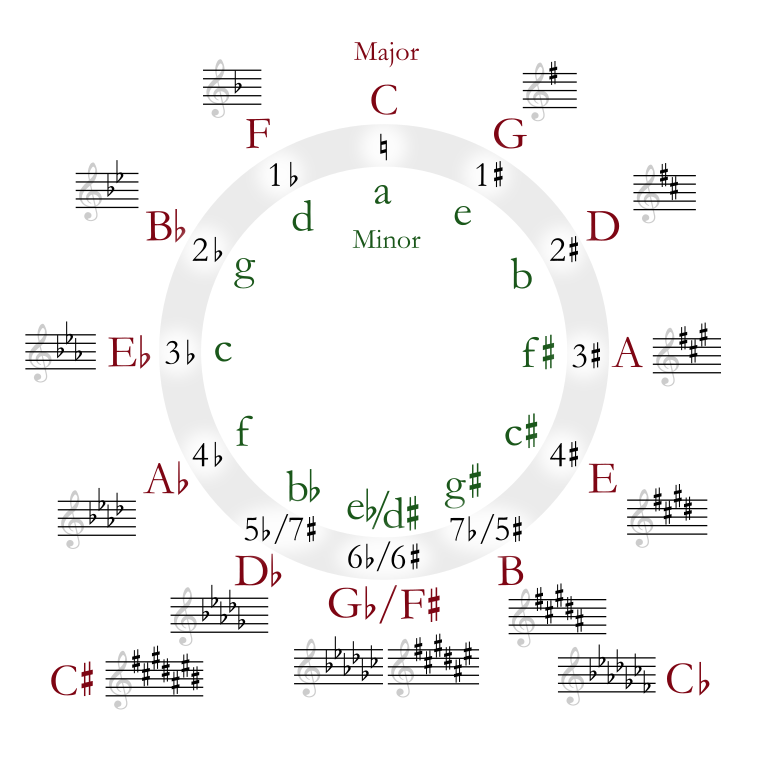最一位彈吉他的朋友說他想學學音樂理論,因為他學吉他時學到一首歌如果主調性確定了,就可以預期其他配套的調性。譬如 C 大調可以預期會搭配 A 小調,這樣有助於伴奏找和弦。我很驚訝我彈了 N 年的哈農不知道有這層關係,反而是沒彈哈農的朋友曉得這道理。
Recently one of my friends who plays guitar said he wants to learn music theory, because he learned that if the major key of a song is known, several chords in related keys can be expected. For example, a C major chord usually comes with an A minor chord. This is useful when he accompanies a song, or improvise. I was immediately shocked that this relationship is already written in Hanon's The Virtuoso Pianist in 60 Exercises in the scales exercises, which I started to play a long while ago, but no one told me the use of it. Instead, my dear friend who knew nothing about Hanon, or piano scales, already knows these chord relationships.
翻開哈農,音階總共12組,每組大調配兩個小調 (Harmonic, Melodic) 所以總共有36種調。如果說一個調只要改變一個音符位置就可變成另一個調, 譬如 C 大調升 G 就變成 A 小調 (Harmonic) 我們就把它關連起來,那可以建成一個關聯圖。我用程式把所有可能搜了一遍 (比對36x36次) 得到了上圖。從中可發現,C大調可以很容易轉成兩個大調 (F, G) 和三個小調 (C-mel, A-har, D-mel)。比較讓人出乎預料的是 C 可以轉 D-mel 後轉 D。至於怎麼用,我不會作曲所以也不知道這圖到底有沒有用...不過 wikipedia 有比較簡略的圖表:
In The Virtuoso Pianist in 60 Exercises, there are 12 sets of scales, each of which presents one major and two minors (harmonic and melodic minors). Thus totally there are 36 different kinds of scales. If we relate two different scales when there is only one note, out of the 7 notes, to be changed to become another scale, we can generate a network of scale relationship. For example, C-major can easily turn into A minor (harmonic) by changing G to G#. I wrote a program to search for all pairs that have this relationship (only need to match 36x36 times), and got the image above. It can be seen that C major can turn into two different majors (C and G) and three minors (C-melo, A-har, and D-mel). What may be less known is that C is closely related to D-mel, which means that a C tone can turn into a D tone smoothly, by firstly turning into D-mel. This finding, with the network, may be useful in composing...hopefully someone who knows composing can tell me whether it is useful. At least, there is already a simple chart in Wikipedia:
PS.
這裡 Melodic 音階只考慮上行。因為下行的音階與相對應的大調相等,不用重複。
In my scale relationship chart, the melodic minor represents the ascending part. The descending part is the nature minor, which has the same key signature of the related major scale. Therefore we don't have to duplicate the scales.
下面可以讓大家自己拉出喜歡的key的位置 (請自行放大瀏覽器畫面):
The scale relationship chart is made of the little interactive widget below. (Please use your browser to zoom in to have a bigger image.)

